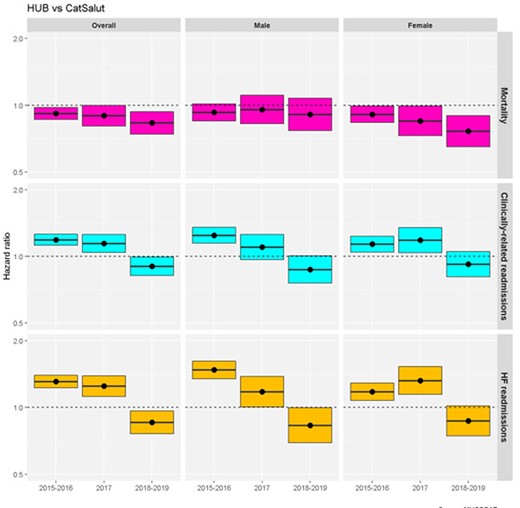-
PDF
- Split View
-
Views
-
Cite
Cite
L Alcober Morte, B Torres, E Vela, M Cleries, M Corbella, N Jose, R Ramos, M Ras, C Enjuanes, J Comin-Colet, Effectiveness of transitional-care programmes according to the sex of patients with heart failure managed in integrated care systems: a study with longitudinal real-world data in 77,554 patients, European Heart Journal, Volume 44, Issue Supplement_2, November 2023, ehad655.1054, https://doi.org/10.1093/eurheartj/ehad655.1054
Close - Share Icon Share
Abstract
Integrated heart failure (HF) programs are the recommended setting for management of patients with HF. In this setting, several sex differences in outcomes and medical resource use have been described. However, the whether the effectiveness of such HF programs may differ according to sex has not been evaluated.
To analyze the effect of sex on health outcomes before and after a pragmatic implementation of an intensive transitional care nurse-based HF management program integrating hospital and primary care and resources for patients with HF at a high risk of events in a health-care area of 209,255 inhabitants.
We included all individuals consecutively admitted to hospital with at least one ICD-9-CM code for HF as primary diagnosis and discharged alive in Catalonia (7,794,749 inhabitants) during 2015-2019. We considered 3 periods: pre-implementation (2015-2016), transition (2017) and consolidation (2018-2019). We compared outcomes between patients of the implementation area and the rest of Catalonia stratified by sex.
We included 77,554 patients in the study: 3,396 in the implementation area and 74, 158 in the rest of Catalonia. 35,895 (46.3%) were male and 41,659 (53.7%) female. Death occurred in 37,469 (48.3%), clinically related readmission in 41,709 (53.8%) and HF readmission in 29,755 (38.4%). In the population in which the HF program was implemented (HUB-Delta area), multivariate adjusted Cox proportional hazards analyses (Table 1) showed reduction in all-cause death, clinically related readmission and HF readmission both in the transition period (2017) and in the consolidation period (2018-2019) in both men and women. As shown in Figure 1 (left column), compared to the rest of Catalonia, the implementation of the programme in the HUB-Delta area significantly improved outcomes in patients with HF during the consolidation period and these benefits (central and right column) were equally observed in both sexes. The reduction of mortality was more prominent among females (26% of relative change) compared to males (9.3% of relative change). Whereas, clinically related readmission and HF readmission improved more in males (15.7% and 20.7% relative change respectively in males and 7% and 12.6% in females.

Author notes
Funding Acknowledgements: None.




